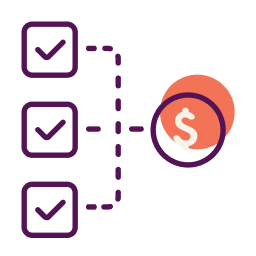If you’ve ever applied for a small business loan (or any loan for that matter) before, you’re probably familiar with the term “underwriter” or “underwriting,” as in, “Your loan application is in underwriting,” or “The underwriter is looking at your application.” This is an important part of the loan process, but can sometimes feel like your loan goes into a black box and you don’t have any visibility. So let’s talk about underwriting small business loans, what that means, how it works, and how you can better prepare your loan application for the underwriting process.
What Underwriters Want to Know
Although they won’t ask it this way, lenders are looking for the answers to three important questions when underwriting small business loans:
- Can your business repay a loan? Does your business have the financial ability to service debt—make periodic payments?
- Will your business repay a loan? The nuance is a little different here, isn’t it. Will you make each and every periodic payment on time? Some businesses have the means, but don’t reliably make periodic payments.
- What will you do in unforeseen circumstances? If something unexpected happens, do you have a plan and the ability to continue making your loan payments?
When an underwriter reviews your loan application, he or she is looking for the answers to those questions. If your loan application includes the answers, it will be approved. If it doesn’t, it won’t. Knowing what an underwriter is looking for will help you make sure you include all the information that will help him or her answer these three questions.
Every lender has different criteria when underwriting a small business loan, so there is no real standard that applies to every lender, but most lenders are looking at the same type of things when they look at your business—although they might weight some of the answers differently than others.
What Information do Underwriters Need?
There was a day when underwriters would manually review every application (and some lenders still do that), but today, most business lenders have automated the process with proprietary algorithms and formulas to help inform the underwriting decisions. We’ve talked before about how data drives loan decisions, underwriting business loans is where most of that takes place.
Although in many cases it doesn’t stop at a completely automated process. In those cases, once your loan application has gone through the automated screening process, a real-life underwriter will look at the information to ultimately make a decision about your loan application and whether or not to accept or reject it.
With that in mind, here is what many underwriters are looking at when they review your loan application:
- The business’ monthly/annual revenue: If you don’t have the revenue to support periodic payments, you likely aren’t going to get approved for a loan. In fact, most lenders have a revenue to loan ratio that helps them calculate what they will actually lend to your business if your application is approved. Although there are some exceptions to this general rule, you shouldn’t expect a loan approval on any amount over 10% of your annual revenues. Somewhere between 50% and 100%, if they look at your monthly gross revenue. This amount will be heavily influenced by whether or not you have any other business loans or lines of credit.
- Your personal credit score: For most small business owners in the United States, your personal credit score is going to be part of every business creditworthiness decision. Many lenders will look at your personal credit score to determine whether or not they will pursue your loan application at all. For example, traditional lenders are looking for credit scores in the 700s (though some will go as low as 680), the SBA’s minimum threshold is around 650, some online lenders will go as low as 600, with a few even going as low as 500. Be aware though, that the lower your personal credit score, the more expensive the financing will likely be.
- Collateral: Not all lenders require specific collateral from potential borrowers, but most banks do and the SBA still does. The SBA won’t always require that you fully collateralized your loan, but they will require all the collateral you have available. Many online lenders will apply a general lien on business assets but there are some cash advance providers that don’t. Many lenders today, even traditional lenders like the local bank, will require a personal guarantee on most small business loans so don’t be surprised if that’s something required by your lender.
- Other sources of repayment: Underwriters may also look at other sources of income you might use to repay a loan, like a guarantor, an insurance policy, or additional income from another job, etc.
- Personal equity: It’s not uncommon for underwriters to be interested in how much money you have invested in your business. Did you help with startup costs with savings or other personal investment? Have you invested other personal assets? Some lenders like to see that you have some personal skin in the game. In other words, you also have something to lose should the business default and you are forced to shutter the business.
- Your business’ debt service coverage ratio: This is a calculation of your business’ income and the total amount of business financing you may already have. If your ratio is below 1.25, it will be difficult to get more financing. You calculate your ratio by dividing your business income by your total annual debt service costs (all the principal and interest you pay in a year). If you’re not quite sure how to come up with this number, your bookkeeper or accountant will be able to help you.
- Your debt-to-asset ratio: This number will be particularly important to an underwriter if there isn’t a collateral requirement for your loan. They want to make sure you have enough assets to cover the loan in the event you default. In other words, do you have enough equipment or property (for example) to liquidate and cover the loan should you not be able to make your periodic payments. Lenders typically want to see a ratio of more than 1:1—more assets than the value of the amount you are borrowing.
- Your loan-to-value ratio: If your loan requires collateral, this applies. Your collateral should be equal to at least the amount you are borrowing. However, what lenders really want to see is that your collateral is worth at least 20% more than you want to borrow. If you’ve ever wondered why you needed a down payment of around 20% to buy a new car or purchase a new house, it was because the lender wanted to make sure you met this ratio.
- Your net-worth-to-loan-size ratio: Another way underwriters look at a potential loan is by comparing your company or personal assets (net worth) to the loan amount to make sure you can afford the loan. 1:1 ratio of financial assets and liabilities compared to the loan amount is good, but some lenders don’t require that.
It’s hard to know what an individual underwriter may require for any specific lender, but if you are prepared with this information, or at least able to accurately respond to questions about this information if asked, you will be prepared for the underwriting process.
What Are the Deal Killers?
Knowing what most underwriters are looking for is a good idea, but knowing what could be potential deal killers is just as important. There are a few things, if underwriters see them, which could elicit an automatic application denial. Here’s a list of some of the common deal killers:
- Unknown recent business cash advances or loans that are discovered but not disclosed in the the month to date (MTD) bank activity
- Excessive negative days in the MDT bank activity printout
- A criminal background history
- Undisclosed tax liens or those not in a payment plan
- A recent bankruptcy (within the last 6 months) or any open bankruptcy NOTE: A discharged bankruptcy of 6 months or longer won’t necessarily disqualify a borrower depending upon the lender
- Unsatisfied excessive or large judgments
- Less than 50% ownership (depending on the lender)
- A major drop in revenue
- Negative landlord references (months behind on rent or in the middle of an eviction)
- An undisclosed defaulted or restructured business loan or cash advance
It’s important to be as accurate as possible when completing your loan application. It’s difficult to get away with a mistake-riddled or fraudulent application; and if the underwriter has reason to believe that your simple mistake was an attempt to defraud (see some of the deal killers above), at the very least your loan application will be rejected.
I think it’s safe to say that data drives loan decisions, but it needs to be accurate and verifiable data. Which, by the way, a good underwriter will discover and verify.
Before You Apply for a Loan
Spend some time with a trusted financial advisor to discuss the underwriting questions above and make sure there aren’t any deal killing surprises in there before you start talking to a lender and before your loan application goes to an underwriter. Knowing the answers and being prepared as possible might not guarantee you’ll get the small business loan you’re looking for, but it will improve the odds and will help you determine the loan that’s the best for your business.
This article was originally written on August 20, 2020 and updated on June 23, 2023.



Have at it! We'd love to hear from you and encourage a lively discussion among our users. Please help us keep our site clean and protect yourself. Refrain from posting overtly promotional content, and avoid disclosing personal information such as bank account or phone numbers.
Reviews Disclosure: The responses below are not provided or commissioned by the credit card, financing and service companies that appear on this site. Responses have not been reviewed, approved or otherwise endorsed by the credit card, financing and service companies and it is not their responsibility to ensure all posts and/or questions are answered.